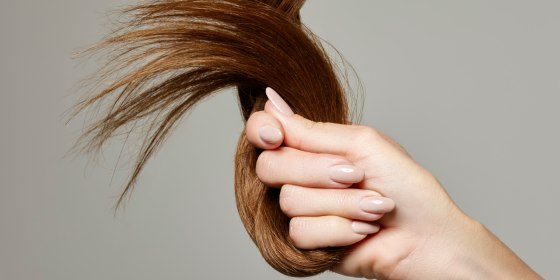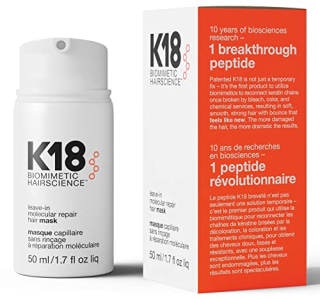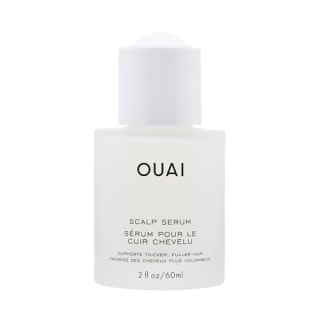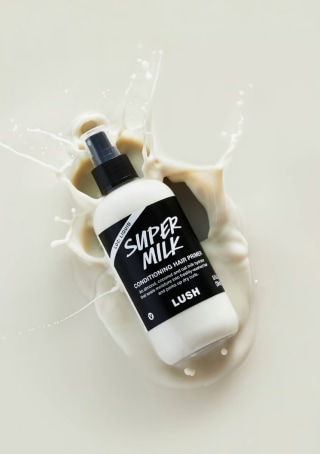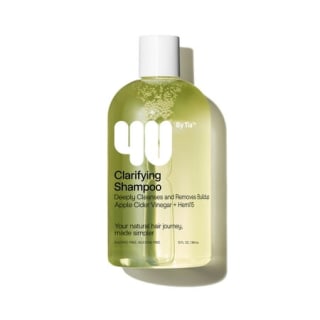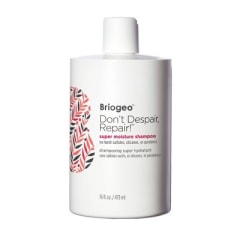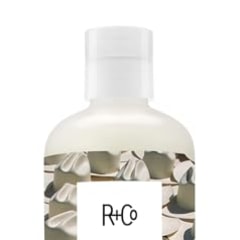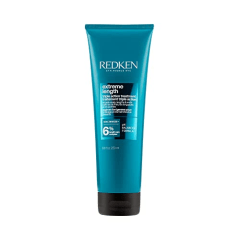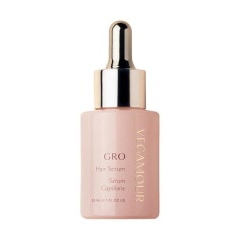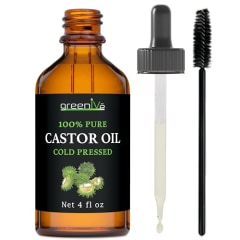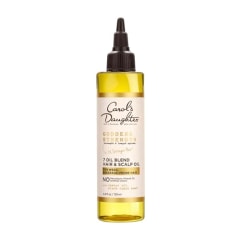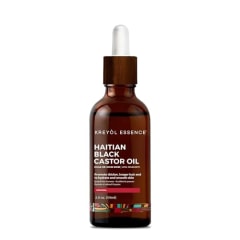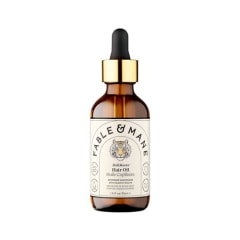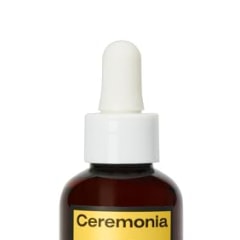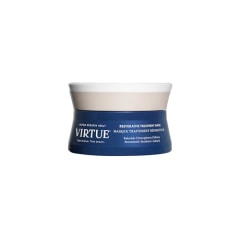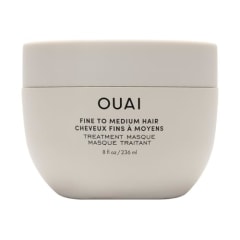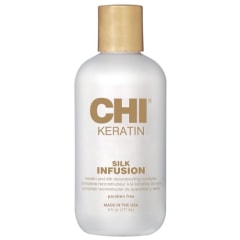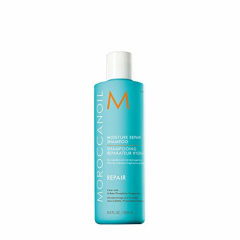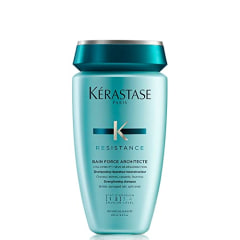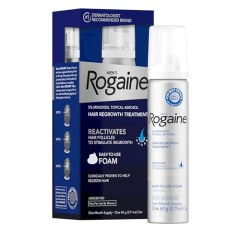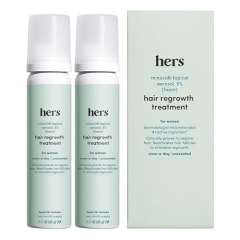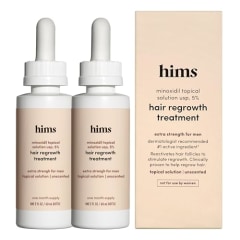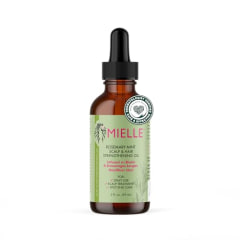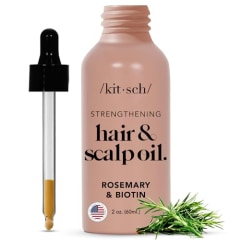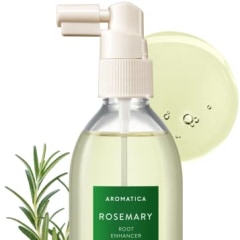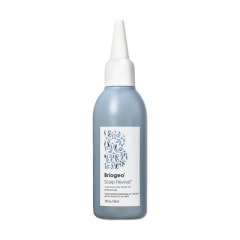Shopping for hair care can be daunting, whether you’re a beginner navigating the packed hair aisle at the store or a beauty enthusiast who wants to try everything and anything. With so many terms and ingredients to know about, it’s important to know what works best for you and your hair type, texture and specific concerns like dry hair and oily scalps.
To help you better understand common hair care terms and ingredients, I created this glossary, guided by hair care experts and our extensive coverage. Bookmark this page: I’ll be updating this periodically with more hair care ingredients found in shampoos, hair masks, hair oils and more.
SKIP AHEAD Biotin | Castor oil | Keratin | Minoxidil | Parabens | Rosemary oil | Sebum | Silicones | Sulfates | Why trust NBC Select?
Want more from NBC Select? Sign up for our newsletter, The Selection, and shop smarter.
Our favorite hair care products
Best for fine hair: K18 Leave-In Molecular Repair Hair Mask
- Available in multiple sizes
- Improves manageability
- No rinsing needed
- Higher price point
“My hairstylist started using the K18 hair mask on me during cut and colors back in 2021 and now, I use it at home regularly,” says NBC Select editorial director Lauren Swanson. “It somehow makes my fine, straight hair feel stronger and smoother without weighing it down — like a deep treatment that actually gets it.”
This color-safe reparative hair mask has peptides to reconnect the bonds in your hair that have been broken due to bleaching, heat damage and chemical treatments, according to the brand. By reconnecting them, it can strengthen your hair while also improving its elasticity.
Best scalp treatment: Ouai Scalp Serum
- Improves scalp hydration
- For all hair types
- Can use on wet/dry hair
- Higher price point
Ouai’s multitasking scalp serum balances the scalp, soothes it and makes your hair appear fuller and thicker, according to the brand. “I massage it into my part and hairline (where my hair is the sparsest) before bed and rinse it out in the morning when I wash my hair,” says NBC Select updates editor Mili Godio, who has fine, wavy hair. “It makes my hair look so much thicker and helps cover those sparse areas. Plus, it doesn’t make my hair look oily or greasy like so many other scalp serums do.”
Best for wavy hair: Lush Super Milk Conditioning Hair Primer
- Improves shine
- Long-lasting scent
- Reduces frizz
- Only sold on Lush’s site
This leave-in conditioner, which doubles as a heat protectant and detangler, is perfect for my dry, damaged, medium-thick and wavy hair. The creamy conditioner helps soften and moisturize my hair without weighing down my waves and instead helps define them. Plus, a little goes a very long way — despite using this spray regularly, I’ve barely made a dent in the bottle, which makes it worth the splurge, in my opinion. (Ed’s note: The inclusion of products sold by Lush in this article was made independently of Evans.)
Best for curly hair: 4U by Tia Clarifying Shampoo
- Non-drying
- Reduces frizz
- Improves dullness
- Nothing to note at this time
NBC Select editorial projects manager Rebecca Rodriguez uses this clarifying shampoo once a week to remove product buildup from her thick, curly hair. “My hair always feels lightweight and clean after I use this,” she says. The sulfate-free shampoo has apple cider vinegar to clarify and stimulate the scalp, sea moss extract to add strength and shine to the hair and hemisqualane (a silicone alternative) to nourish the hair and define waves, curls and coils.
Best for natural hair: Olaplex No. 5 Bond Maintenance Conditioner
- Moisturizing
- Maintains hair health
- Improves manageability
- May be hard to squeeze out
Although you would typically wash out this conditioner in the shower, NBC Select associate SEO reporter Ashley Morris loves using it as a leave-in hair mask to treat her natural, damaged hair. “[It] helped to restore moisture and shape to my small curls,” she says. “It took months, but I was able to treat the heat-damaged sections and minimize breakage with the help of this conditioner.”
Hair care terms to know
Biotin
Biotin is a B vitamin that promotes hair growth and strength. While it won’t make your hair grow faster, it will help prevent breakage and make your hair look fuller, feel stronger and appear healthier. Biotin is also great for giving your hair extra support and shine, especially if it feels and looks weak or thin.
Where to find it: supplements, shampoos, conditioners, hair masks and serums.
Best for: all hair types, but especially for anyone dealing with hair thinning or damage.
Expert tip: You can also get biotin from foods like eggs, nuts and salmon.
Castor oil
Castor oil, a nutrient-rich oil from the castor bean plant, is packed with ricinoleic acid, a fatty acid known for its moisturizing, antibacterial and anti-inflammatory properties. It also promotes hair growth, prevents breakage, soothes the scalp and adds thickness and shine.
Where to find it: hair growth oils or serums, moisturizing shampoos, deep conditioners and scalp and anti-dandruff treatments.
Best for: those with medium and thick hair. If you have fine or thin hair, this thick oil can cause buildup and weigh it down, so either avoid using castor oil or thoroughly wash it out to prevent any residue.
Expert tip: If you have a sensitive scalp, do a patch test before applying it to your scalp to avoid a reaction. When using castor oil in a scalp treatment, massage it into your scalp to stimulate circulation and absorption.
Keratin
Keratin is a natural protein found in your hair, and it’s often added to hair products to help repair damage, smooth frizz and boost shine. It works by filling in the tiny cracks or weak spots along the hair shaft, helping to strengthen and smooth the cuticle.
Where to find it in hair products: keratin treatments, masks and strengthening shampoos.
Best for: frizz-prone, damaged or chemically treated hair.
Expert tip: Too much keratin can make hair stiff, so balance it with moisture. Use it consistently for at least two weeks to start seeing visible repair. Once the hair begins to strengthen and improve from the added protein, it’s essential to follow up with a hydrating conditioning mask, which helps prevent the hair from becoming too stiff or brittle due to excess protein.
Minoxidil
Minoxidil is an FDA-approved topical treatment for hair loss. It increases blood flow to stimulate hair growth and helps thicken hair over time.
Where to find it: it is the active ingredient in Rogaine and similar hair regrowth serums, foams or prescription-strength treatments.
Best for: those with androgenetic alopecia (pattern baldness) or experiencing excessive hair shedding or thinning. It is not for anyone experiencing temporary hair loss or looking for a quick fix.
Expert tip: It takes around three to six months to see results as long as you are consistently applying it every day.
Parabens
Parabens are preservatives found in hair products’ packaging to prevent bacteria, mold and other microorganisms from growing. While they serve a functional purpose in manufacturing, they don’t provide any direct benefit to the health of your hair or scalp. They can also cause build-up and irritation with repeated use.
Where to find it: shampoos, conditioners and styling products.
Best for: anyone without scalp sensitivity.
Expert tip: When possible, search for products that are paraben-free to avoid any potential issues for both your scalp and hair. You can tell build-up is occurring when your hair starts to feel heavy and it looks flat, dull or greasy, even after washing it. Scalp irritation from parabens is not as common; however, it does have the potential to cause a reaction.
Rosemary oil
Rosemary oil is an essential oil with anti-inflammatory and antimicrobial properties. It strengthens the hair, promotes scalp health and hair growth, balances oil production and combats dandruff and dry scalp.
Where to find it: serums, oils, treatments and anti-dandruff products.
Best for: those looking to improve scalp health.
Expert tip: You should always dilute rosemary oil since it can irritate sensitive scalps. Add one to two drops of rosemary oil to your favorite shampoo or combine it with a carrier oil like coconut or jojoba oils to avoid irritation. Use it two to three times a week for hair growth (most people see benefits after two to three months of consistent use).
Sebum
Your scalp naturally produces sebum (an oily substance) to moisturize and protect it. Sebum helps protect your hair and scalp against dryness, breakage, bacteria and environmental damage. If there’s an imbalance in your natural sebum production, your hair follicles can become clogged, leading to greasy, oily, damaged and flaking hair.
Expert tip: Incorporate a gentle, sulfate-free shampoo, lightweight hair oils and scalp massages into your routine to balance sebum.
Silicones
Silicones act as a protective coating that helps make hair more manageable, shinier and frizz-free. While silicones may make your hair feel silky, they can cause product buildup over time.
Where to find it: conditioners, serums, heat protectants and styling creams.
Best for: people with straight or high-porosity hair who may benefit from the added shine and protection. They’re best for medium, thick, coarse, straight and wavy hair (silicones may way down fine and curly hair types).
Expert tip: If your hair feels heavy or greasy, it might be because of silicone buildup. Use a clarifying shampoo to reset your hair.
Sulfates
Sulfates are a cleansing agent that makes shampoos and other hair products foam up. However, they’re known for stripping dirt and natural oils from your hair, so choose a sulfate-free hair product when possible.
Where to find it: some shampoos and clarifying products.
Best for: Most people should avoid sulfates, specifically those with curly, color-treated, or dry hair types, since sulfates can be too harsh.
Expert tip: When shopping, you may come across sodium lauryl sulfate (SLS) and sodium laureth sulfate (SLES), which are the two most common types of sulfates. Instead, look for more gentle alternatives like sodium cocoyl isethionate, apple cider vinegar, cocamidopropyl betaine and sodium lauryl sulfoacetate (SLSA).
Meet our experts
NBC Select, we work with experts who have specialized knowledge and authority based on relevant training and/or experience. We also take steps to ensure all expert advice and recommendations are made independently and without undisclosed financial conflicts of interest.
- Daisy Evans is a hairstylist and lead of Lush hair and Lush HairLab, the brand’s first stand-alone hair salon in Brighton, United Kingdom.
- Christine Bellemare is a hairstylist and co-owner of Maven A Collect, a hair salon in Boston.
- Jae Manuel Cardenas is a senior Stylist at Ollin Salon NYC by Johnny Ramirez.
- Sophie Rose Gutterman is a Los Angeles-based celebrity hairstylist specializing in curly hair.
- Jennifer Thomas is a SH-RD ambassador and celebrity hair stylist.
Why trust NBC Select?
I am an associate reporter at NBC Select covering beauty, including new product launches and articles such as the best blow dryer brushes and dry shampoos. For this piece, I interviewed five hair experts to define each term. I also gathered information about who should use each ingredient, where to find them and any relevant expert tips and guidance.
Catch up on NBC Select’s in-depth coverage of tech and tools, wellness and more, and follow us on Facebook, Instagram, Twitter and TikTok to stay up to date.
